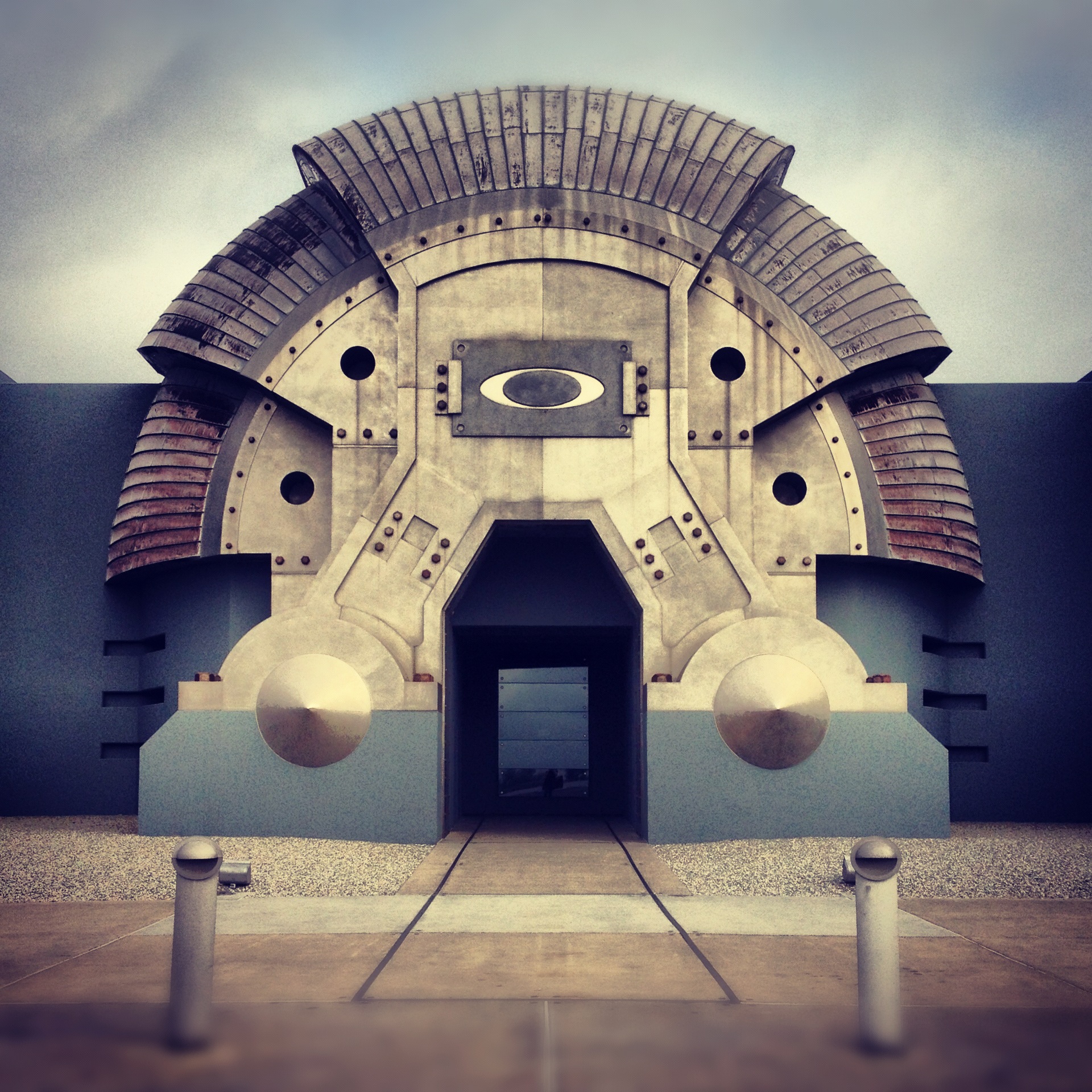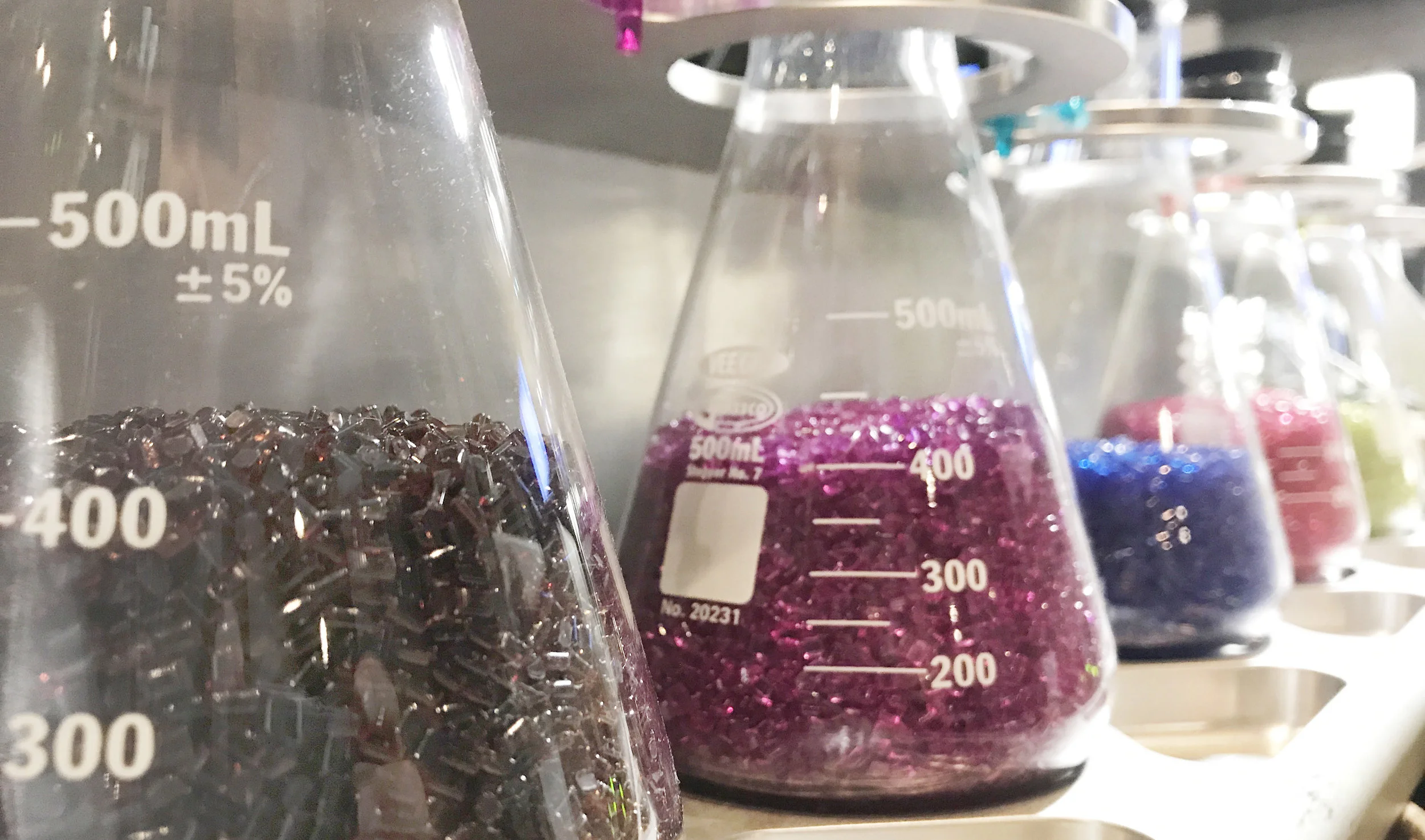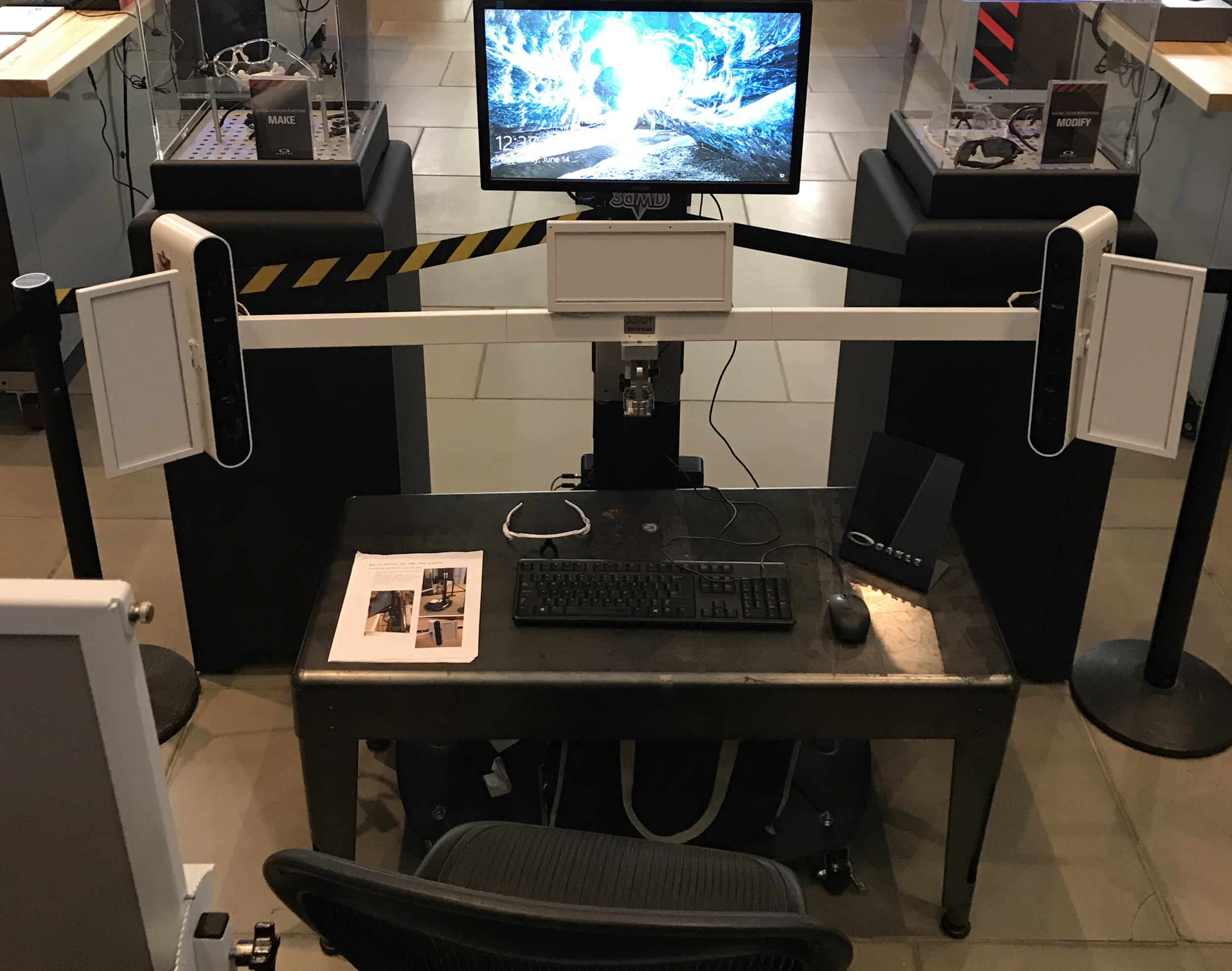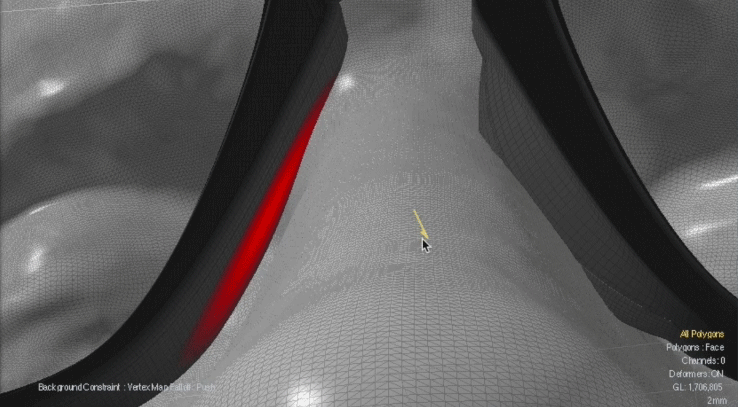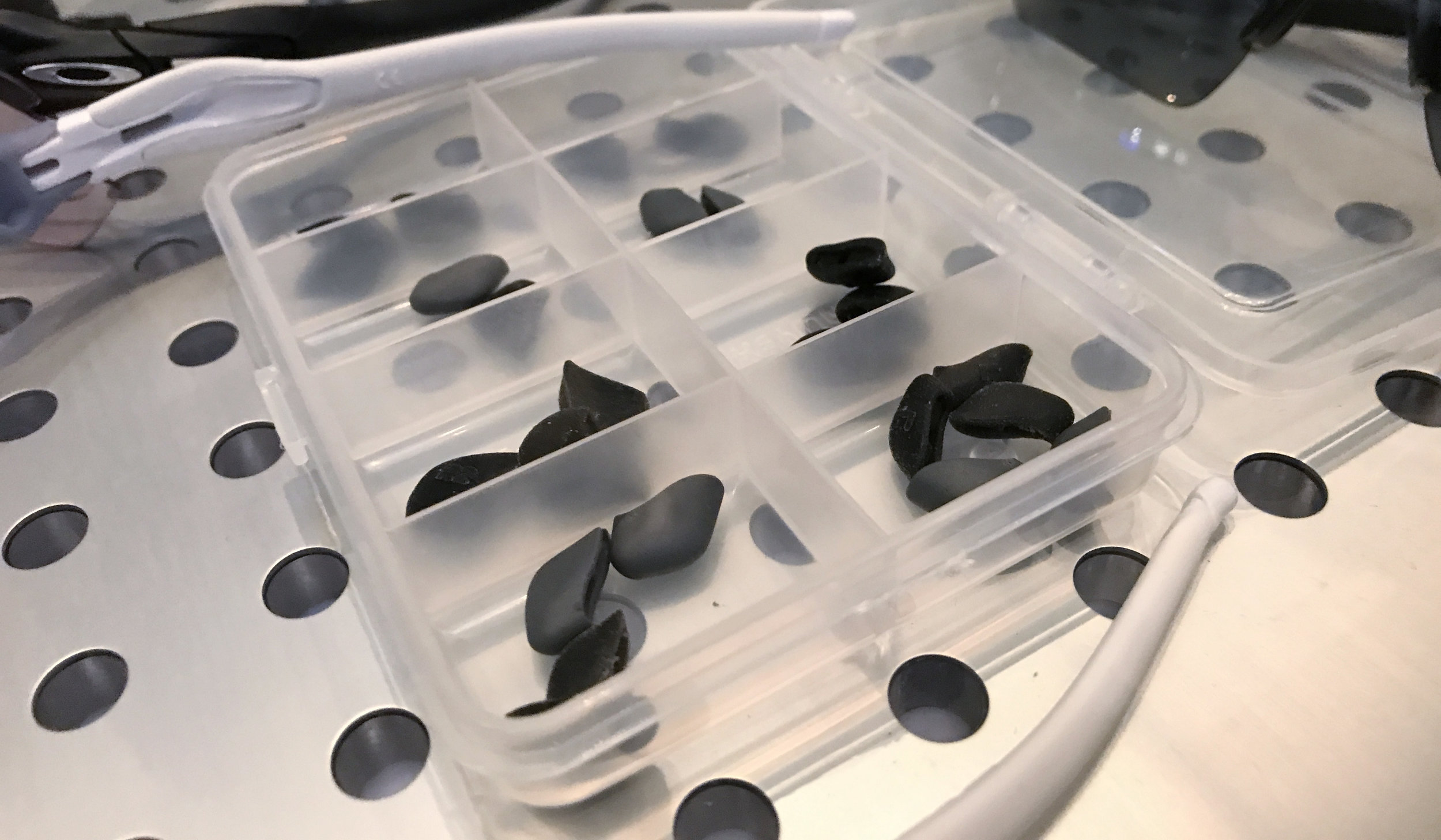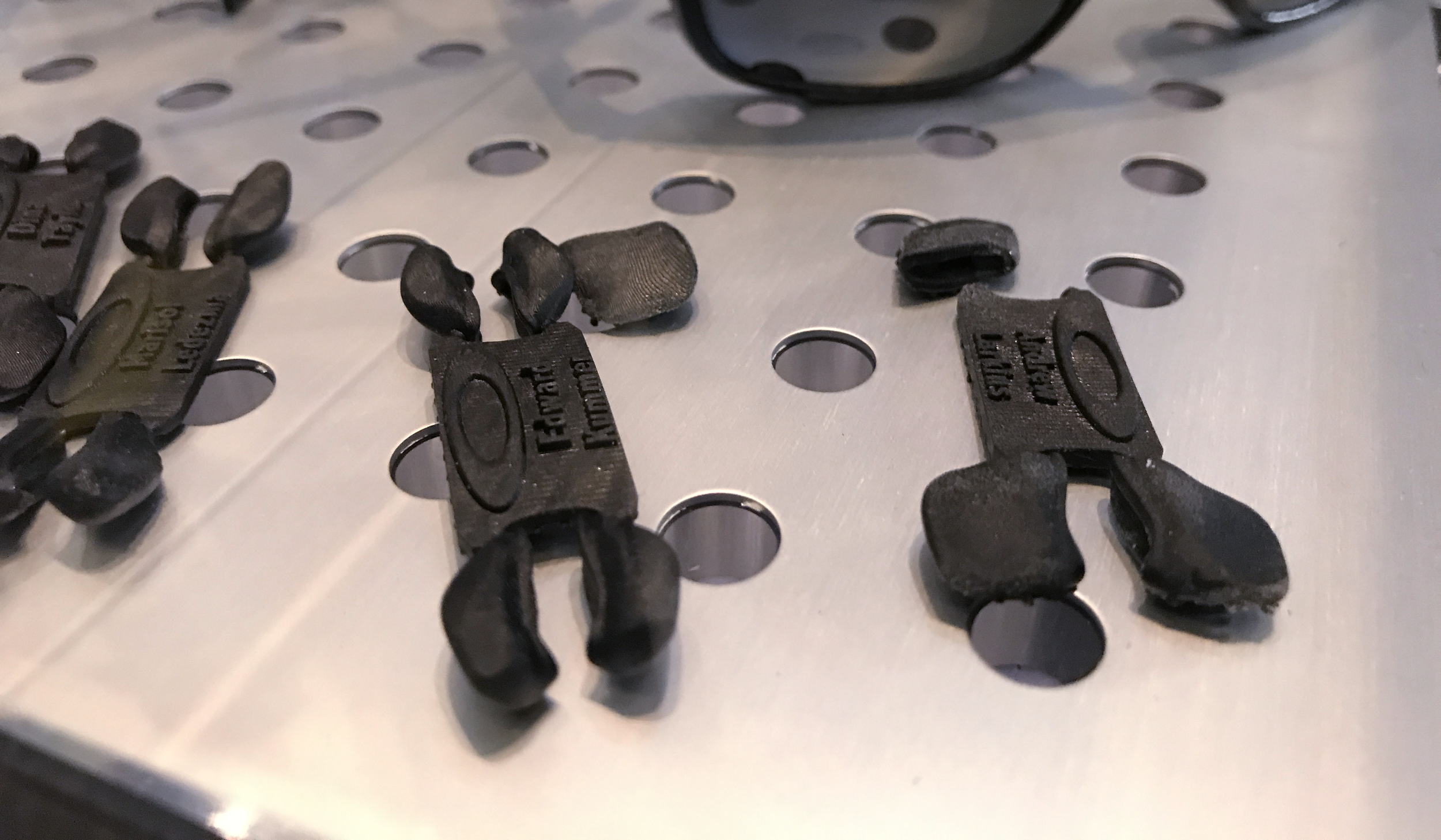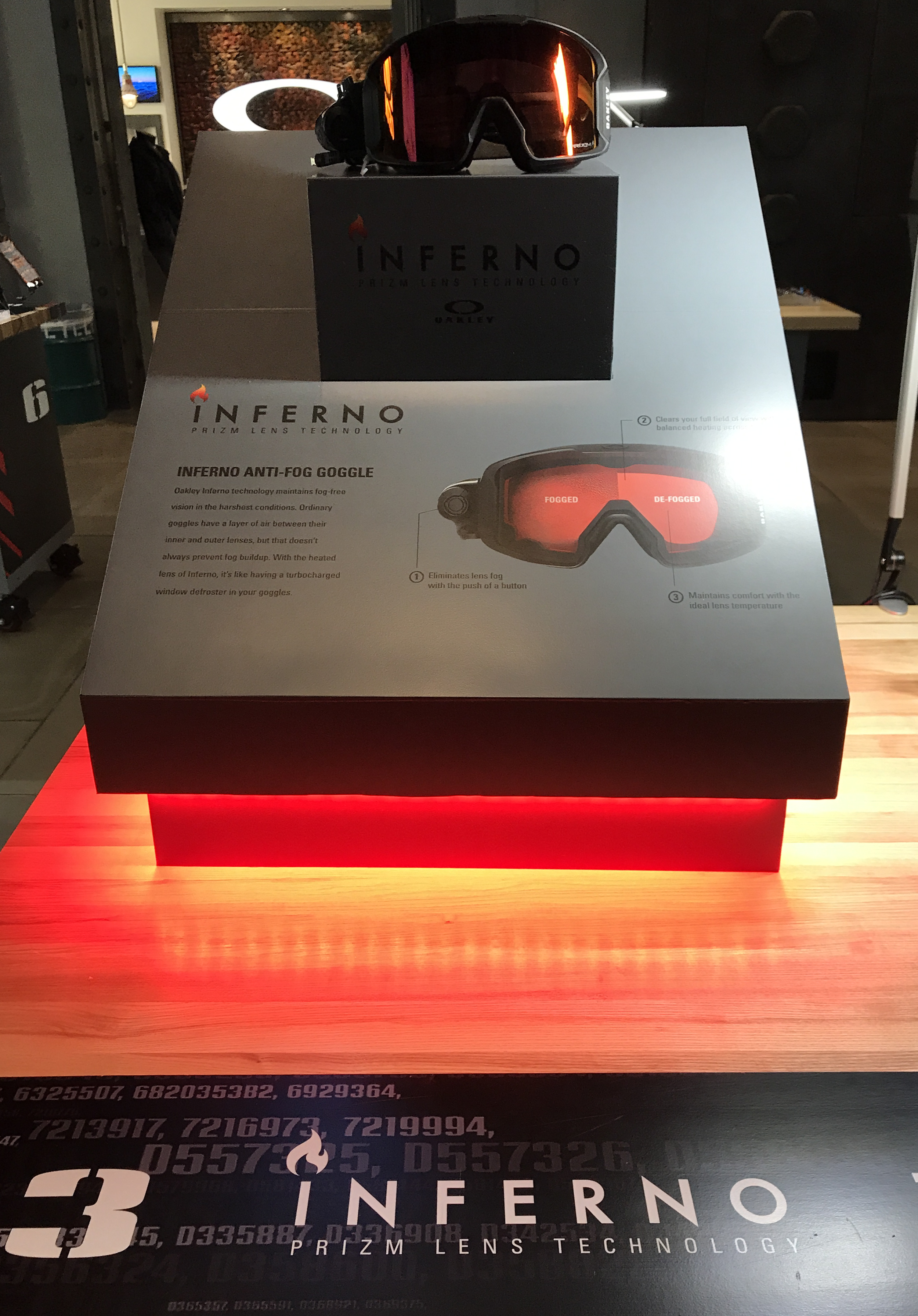Designing for the Future: Oakley's Vision Performance Lab
Facial Scans, 3D printing & the future. Its all here At Oakley's Vision Performance Lab at 1 Icon, Foothill Ranch California, USA. First thing's first, let's get this out of the way. Oakley HQ looks like a steampunk cosplay enthusiast that met Valve's logo designer & decided architecture was the medium of choice for a new creation. It's epically crafted down to the jet fighter seating in the reception. Looking at the design you'd not think this looks like the face of the future but rather it's dystopian counterpart.
You should see the torpedo that's just in front of this!
But don't stop at the gate, or at the reception. Keep walking. Towards the back of the main building you'll find yourself face to face with what looks like a mad scientist lab. Literally populated with scanners, beakers, lasers, lights, displays & a bunch of amazing tech. It's the introduction of Oakley's pilot program currently being run at their head quarters.
Yes, beakers!
It's split to various stations but I want to focus on the ones I had the privilege to be involved in along with members of my team at my previous employer, Foundry. I've been a part of various wonderful projects across the years but many of them take years to become public, if at all. In this case, the idea is now reality, even if only in pilot mode.
The two stations called Make & Modify sitting front & center, preceded by the facial scanner build by 3DMD. The premise is simple. We all have bought eyewear & have at some point in time complained about the fit & feel of them on our face. Whether they are sitting uncomfortably on the nose, or hitting brow line, or resting on our cheeks or simply not feeling good on our face. This is where Oakley's system to Make or Modify comes into play.
The scanning station surrounded by Make & Modify enclosures
The initial step is to sit in the chair provided, have one of their tech wiz designers startup the facial scanner which will scan your face & output a mesh data set typical of 3D scanners. But that's just the beginning. This becomes your digital facial avatar. It's uniquely you. And it is also now being promoted to a design tool. You see eyewear design is typically done using average measurement sets. Designers try to hit the larger majority of their target audience within a model range. But these designs never truly capture your unique, mostly asymmetric face within their symmetric designs. By having your face in their system, they're able to bring in the eyewear model you liked, manipulate things like the nose pads to a custom fit within the 3D system that guarantees a perfect fit.
Sneak peak behind the technology curtain at Oakley
This was the portion that required our involvement at Foundry to partner up with Oakley & find a unique bespoke solution that solved various challenges while maintaining certain design language unique to Oakley. One of my key directives as Head of Design at Foundry was working with with Derek Cicero, Head of Strategic Projects to identify and develop leading edge projects, such as Oakley's Make or Modify, that utilized Foundry’s core technology in new ways to meet the ever changing needs of the product design process. Much of this process started by sitting with Oakley's design & technical team members & understand their challenge. Where they were at the time, where they were heading & then breaking up the journey to deliverable milestones. Once the challenge is understood, it's a matter of figuring out whether the tools we had at our disposable got us where we need to get. In this case the foundation was Foundry's MODO. The reason it was a great fit was that MODO's inherit strength in Subdivision Surface Modeling, a key driver in organic design modeling. Due to the fact that you're marrying Oakley's organic frame designs with the organic nature of facial scans it made sense that MODO drove the process. Other solutions were evaluated, even within Foundry's team, including traditional CAD software but the fit wasn't there. MODO provided what's needed as the basis for the system as well as the flexibility to add on additional functionality not found in the the off the self solution. We were importing CAD data (eyewear) & organically editing it to fit the facial scan meshes.
We worked on the initial proof of concept by building a flexible facial rig that grabbed the meta data from the facial scans & adjusted automagically to the preset rig. The Amazing Andy Brown put together the initial framework on top of which the development team was able to prove the concept works.
Initial facial rig used to snap to facial scans
The next step was to move from a manual proof of concept to something that can be semi automated. This is where the wonderful dev team came in, led by the masterful Lukasz Pazera, who's also since then moved from Foundry & now joins us here at Pixel Fondue. Lukasz's unique talent in understanding MODO's deep rigging system & animation controls (He built ACS, yeah, THAT guy!) allowed him to juggle Oakley's stringent requirements in manipulating CAD data (the eyewear) & the challenging organic facial scans.
Nose pads hugging the nose perfectly
Obviously lots of iterations & refinement took place until Oakley was satisfied with the results & we crossed the first finish line. What we got at the end are eyewear models that were custom fit, & molded to fit the face of the consumer. At that point the consumer can go down two paths, either get provided with a recommendation for a better fitting off the shelf close matching nose pad OR a fully 3D printable unique nose pad that is an exact match to the facial scan.
Swappable nose pads for quick modifications...
...or fully custom 3D printable nose pads made for you.
There are a number of other amazing technologies at Oakley's HQ pilot program but my involvement was focused on the design, development of the Make & Modify portion of the program in partnership with the Oakley R&D, design & development teams. If you're in South Orange County, California, then drop by & check some of their stuff out. Maybe you can even get a scan done & finally get the eyewear you deserve. It's one of the first consumer level projects involving 3D printing as a customization design tool to make every day products become a better user experience. It's awesome seeing this project in the wild & I'm grateful for the opportunity to have been a part of it during my time as Head of Design at Foundry.
If you're still reading, it means you're still interested in the other stages they're showing off. I've attached a number of images showcasing the other technologies. The image of the beakers is related to the image below. I know it looks like a mad scientist put it together but it's completely sound. Oakley has developed a way to control specific slices of the natural spectrum. It means if you're skiing, wearing a specific color will better help you have more contrast on the mostly white reflective snow which will help you improve performance. Most lenses that help in visibility tone down the entire spectrum, were as these lenses actually only hide specific spectrums. And obviously you can mix and match. It's insane.
Different colored lenses for different activities, the scene behind this is remarkable
The next stage shows up what is basically the future version of Thump. Which basically were mp3 playing sunglasses. this time, they've got bluetooth and a bunch of electronics to help measure your performance. Oddly it looks big and bulky but I urge you to try it out. I had the chance to take one home and try it. What i liked was that both my sunglasses & my headphones felt locked in place. Neither was falling off (traditional sunglasses & AirPods). From a functionality perspective, they work really well together. I also prefer silicone inserts vs. hard plastics for the headphones but that's just me.
It's basically eyewear, headphones, microphone & a personalized training program all in one
The standard polarization filter demo. This is pretty cool but obviously not ground breaking. One thing I have experienced lately using this tech is that it fails miserably in cars that have HUDs (Heads Up Display) because the HUD in of itself is a reflection which the polarizing lenses will actually remove from view. Something to consider. (workaround: Bank your head slightly, you'll look like you have a busted neck or you are a gangsta but it should make the HUD visible again)
May all your lenses be polarized!
Inferno was actually pretty damn awesome. Think of it as an automotive heated windshield technology miniaturized to nano particles. It's freaking cool (actually hot). It heats up the glasses enough that fogging isn't an issue. Obviously this tech is great for sports enthusiasts but I've had conversations with surgeons looking for similar solutions in their line of work. I'd hate to be on the cutting table when their goggles fog up. sheesh!
No more foggy ski slopes
I personally think this is overboard but if you're into the whole personalization thing, specifically of your lenses then you've stopped at the right place. Oakley allow you to etch text on the lens, even some logos (I believe MLB for a start) as well. It's fascinating technology but not my interest in this case.
Yes, Lens Etching Madness
That's a wrap! Visit their HQ location for a tour and check these things your self.


